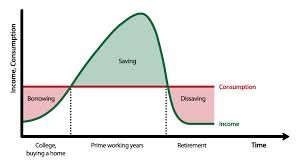Disinvestment as a tool is used by governments throughout the world to give up their stake partly in public enterprises mainly to fund their fiscal deficit, balance of payments, infrastructure projects, public debt, and investment to encourage spending in an economy or Social programs.
The global disinvestment started in 1980’s in United Kingdom where it was met with tremendous success, countries like Germany, Russia, Canada, Japan and Western European countries soon followed the suit. Even China relaxed its Marxist approach and partially indulged in disinvestment and privatization approach. This is because of the benefits of disinvestment and privatization in terms of increased efficiency, acquisition of new markets and advanced techniques, provisions of capital increase and recognition of interest of foreign investors. While India continues to debate on benefits of disinvestment, globally disinvestment trend continues to grow up reaping great benefits for these countries.
Disinvestment in India started in 1991 when India’s high balance of payments forced Indian government to open Indian economy by adopting policies like opening up of foreign trade and investment, deregulation, privatization and inflation control measures. Part of this policy measures was disinvestment to curb balance of payments and to allow more private players in government firms to improve its efficiency as many public sector undertakings (PSU’s) were not doing well at that time under government rule and also to invest the gained money in improving economy but in subsequent years disinvestment was only used to cover the fiscal hole of government.
The main objective behind opening PSUs was to build infrastructure and rapid economic growth but over the years with the increase in competition from private sectors and loss of monopoly and protectionist regime has seen the decline in market share of PSUs. Also in many instances PSUs have found themselves unable to match technological superiority of foreign and domestic private companies. To make matters worse constant government interventions and inefficacy in operation of PSU has led many PSUs to be highly inefficient and debt-ridden, while many PSUs are there to just fulfill the social welfare programs of the government rather than making money for its own self e.g. of which is BSNL which is used by government to provide network connectivity in rural and remote areas which is a highly loss making proposition.
Even in midst of this unfavorable scenario for PSUs many government firms like Coal India, ONGC, LIC are sitting on huge piles of cash and indian government has been regularly liquidating stake in these companies to take advantage good liquidity and equity base of these companies. But noteworthy point is that these firms have huge cash reserves not because of their good performance but rather because these enterprises command resources that a resource constrained economy needs and even these companies are facing problems mainly of bad corporate governance like other PSUs. Rather than utilizing these cash reserves to scale up their operations these cash reserves are kept idle throughout the year to either provide high dividend payout to government or to buy back shares ultimately in order the serve the ever growing fiscal deficit of government, which is mainly there due to the bad policies of the government for which the PSUs have to pay. Also in many cases the government has not changed the ownership of the PSUs and has kept the majority stake with themselves which defeats one of the purpose of disinvestment to privatize the operations of the government firms to bring in much better management and industry practices and business know how to bring in more efficiency in business operations. This raises questions over commitment in disinvestment by government as even after 23 years of liberalization policy adopted by India they still want to have their control over the PSUs and this can be seen from the fact that only few PSUs up until now have been completely privatized or have minor government stake (notable examples being VSNL, BALCO, Modern food industries) ,which were mainly loss making companies, while government has been regularly falling short of their disinvestment targets by huge margins over the years showing their lack in disinvestment commitment.
Government’s reluctance to give up their majority stake has kept private investment at bay in PSUs since private investors don’t see any benefit in investing in loss making PSUs which is under government control and is suffering because of government interventions and bad governance .While in case of profit making companies government either buyback their shares or get money through huge dividend payouts or divests their shares to either national banks or financial institutions like LIC which are again government enterprises and hence it ultimately maintains complete control over these firms to fulfill their vested interests. Sometimes government even abstains from distributing the disinvestment prospectus freely which raise the question of lack of transparency in the deal.
Moreover financial institutions, mutual funds and banks who government forces to buy shares are not willing to list their shares or trade their shares since it would reduce their control over PSUs and sometimes they indulge in insider trading which has led to low valuation of equity restricting government to fully realize benefits of disinvestment process and hence they get low disinvestment returns. Also disinvestment policy of liquidating only partial stake to private investors results in crowding out of private investors where investment by government overpowers the investment by players which is mainly because private players due to their low subscription does not put much capital in the business and shows little interest in monitoring and managing the operations of an enterprise which was one of the main reasons for divesting stake to private companies at the first place. Hence disinvestment policy by India results in capital consumption rather than capital generation.
Considering that government firms under the control of government don’t benefit neither in terms of capital generation and nor in terms of scaling up of operations and good management practices while government use them only for their own benefits, hence, they are better in the hands of private players who work for the benefit of the firm. This can be seen from the example of BHEL where government gave up 32% stake in 2001 and in the following years BHEL witnessed increased profitability, reduced debt and high growth rate. Lots of these kinds of examples can be seen from developed countries where mostly companies are privatized now and are generating better revenues than when they were under government control.
Disinvestment is not only beneficial for the firm but also for the government since through it, government gets money to cover their fiscal hole and can focus more on core operations like education, healthcare, infrastructure, poverty eradication, employment, defence and other activities which ultimately help the country in the better way while reducing the no. of ministries and bureaucrats required to handle these firms ultimately reducing the government spending. Also even if the money from disinvestment is not used to reduce fiscal deficit, it can be used to finance core operations of government which will benefit the tax payers in long run since less tax money would be required for these purposes.
But to realize the full potential of disinvestment it is required that government gives up their majority stake and give up their desire to keep PSUs under their control as the unhealthy implications of partial disinvestment have already been talked about. Also government should also look for in-house revival of the firm by using industry best practices before divesting the firm to get better valuation for the firm as greater the disinvestment money the greater benefits will be accrued for the economy. While many industry experts debate between in-house revival of the firm and disinvestment I believe in-house revival should be limited only to get better valuation and the firm ultimately should be divested as we have already seen benefits of privatization over government rule both domestically and globally.
But not all firms can be completely divested as some PSUs are used by the government to fulfill socio-economic considerations of the country and these firms come under the strategic sector of the economy. These firms are normally from power sector, mining sector, oil sector, defence sector and many other sectors which are concerned with natural resources, social factors and security concerns of the country which if come under private sector might not fulfill the social welfare of the country as private sector’s main objective is profit maximization while main objective of these firms is welfare maximization. Hence, government should only divest partial stake in these companies while it should divest the controlling stake in non-strategic sector companies.
The new government under the leadership of Narendra Modi has brought a new ray of hope for the reigning economy of India, mainly because of his tremendous success in Gujarat, where he showcased impressive results with growth and overall development of Gujarat. The optimism in Modi can be seen from the fact that after having seen Modi led government winning by a clear mandate, India’s publically listed companies saw market capitalization crossing 1.5 trillion dollars with PSU’s rallying the most by 22%, as foreign investors were seen regaining their trust in Indian growth story with Modi becoming the popular name worldwide known for his quick decision making and policy implementation. Hence, looking at his past track record it is hoped that Modi will replicate his success formula of Gujarat to entire India and will revive the economy and will also implement the successful disinvestment policy by eliminating all the loopholes in it.
Click here for government certification in Accounting, Banking & Finance





20 Comments. Leave new
I think in India, disinvestment is form of a last resort for govt. to revive a particular sector. Very well written article!
thnx…Akul
Amazing article! Very informative!
thank you for your appreciation…….
really amazing, and knowledgeable article
Well written…You’ve analyzed almost all the aspects regarding disinvestment 🙂
Each and every aspect is very well explained..good work
Excellent article..! Good..!
nice article with good explanation.
thank you….
well explained
thnx…..
Good article. Well done.
Explained in depth nice aritcle
Nice and well explained article
Amazing!
VEry well Codified 😀
The content was really good 😀
and the prefect paragraphs with adequate amount of information 😀
GOod work 😀
Amazing work. Nice articulation
Excellently written words reading
nice one…